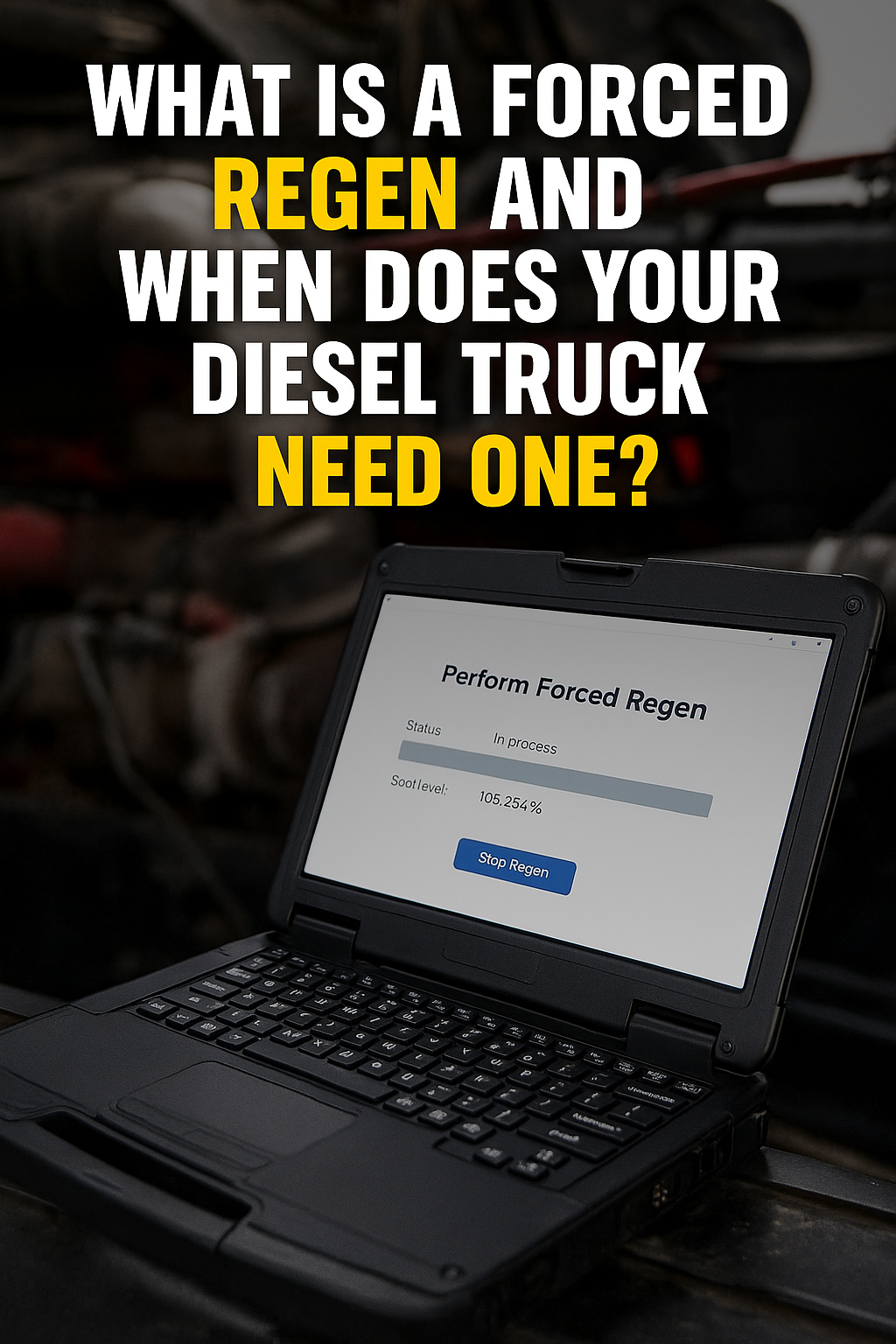
What Is a Forced Regen — And When Does Your Diesel Truck Need One?
Share
If you drive a diesel truck or own a fleet, you’ve likely heard of a forced regeneration — or forced regen. But what exactly is it, and when should you run one?
Let’s break down what a forced regen does, why it matters, and how you can perform one yourself using your NoFeeDiesel diagnostic laptop.
What Is a DPF and Why Does It Get Clogged?
Modern diesel engines are equipped with a Diesel Particulate Filter (DPF), which captures soot and ash produced during combustion. Over time, the filter fills up — and it needs to burn off that soot to stay effective.
This cleaning process is called regeneration, and it happens in three ways:
-
Passive Regeneration – Happens automatically during highway driving when exhaust temps are high
-
Active Regeneration – Triggered by the engine's computer under specific conditions (often unnoticed by the driver)
-
Forced Regeneration – Manually triggered using diagnostic software when the DPF is too clogged for automatic methods to work
When Do You Need a Forced Regen?
A forced regen becomes necessary when your DPF is too full and your truck can’t clean it on its own. Common causes include:
-
🚚 Low-speed, stop-and-go driving
-
⛽ Extended idling or city routes
-
❌ Faulty sensors, injectors, or EGR issues
-
🛠️ Regens failing to complete normally
If your dash displays a “DPF Full” or “Regeneration Needed” warning — and you're unable to complete a passive or active regen — it's time to run a forced regen with a scanner.
What Happens During a Forced Regen?
A forced regen tells your engine to raise exhaust temps high enough (usually 1,100°F+) to burn off the soot inside the DPF.
Using your NoFeeDiesel diagnostic laptop, you can:
-
Connect to the vehicle’s ECU
-
Access the aftertreatment system
-
Start the regeneration manually
-
Monitor temperatures, soot levels, and regen status live
The process usually takes 20–40 minutes, and your truck must be stationary and parked.
Why Use a Diesel Scanner Instead of Going to the Dealer?
A dealership will typically charge $200–$500 to perform a forced regen — often just to hook up the same software you can run yourself with our kit.
At NoFeeDiesel, we give you:
-
Full dealer software (like CAT ET, Insite, DDDL, JPRO)
-
No subscription fees
-
Lifetime access to forced regens, diagnostics, and resets
-
Real-time data so you can monitor soot levels and know when it’s time to regen again
Tips for Running a Safe Forced Regen
-
Only perform when your scanner shows a soot level or DPF load above 75–90%
-
Ensure your truck is parked with no active fault codes blocking the regen
-
Never interrupt a regen mid-cycle unless instructed by a tech
-
Avoid excessive regens — they create heat stress and should only be used when truly needed
Take Control of Your Diesel Maintenance
With a NoFeeDiesel diagnostic kit, you can:
-
Perform forced regens on demand
-
Reset ash accumulation and soot levels
-
Monitor DPF temps and sensor data in real-time
-
Save thousands in downtime and labor
